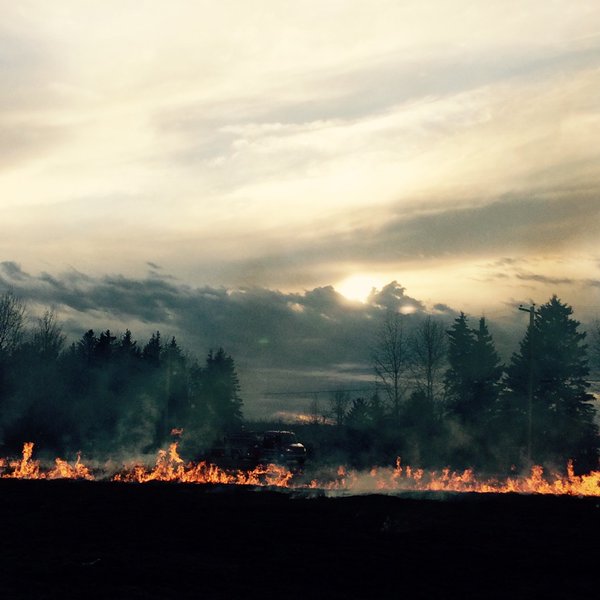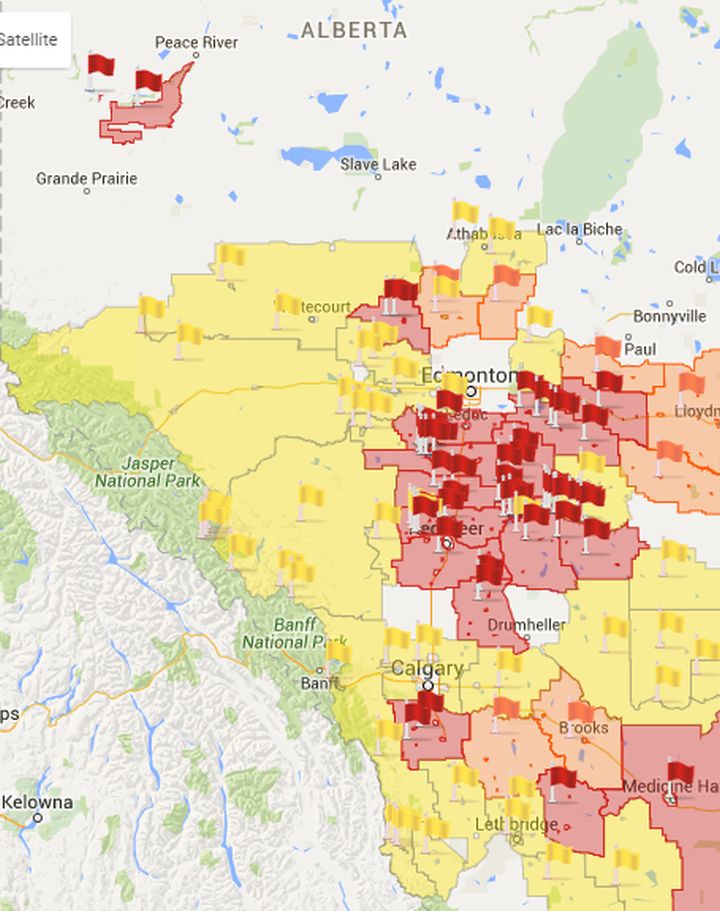EDMONTON – Albertans are used to coping with dry conditions and a wildfire season every year, the consequences of which have occasionally been catastrophic like when a wildfire ripped through the northern Alberta town of Slave Lake in 2011.

But following an incredibly mild winter by provincial standards, there is concern that Mother Nature’s passiveness over the past few months may result in a particularly long and dangerous wildfire season this spring and summer.
“I’ve seen it dry – and drier than this – but never this time of year. So the fear is how dry will it get,” Jamie Coutts, Regional Chief of Lesser Slave Lake Fire Services, said on Saturday. “We try to stay positive, it could rain or snow or whatever still and we hope for that, but it would probably have to be a long steady rain for many days to make a difference at this time, so for us, we’re kind of on high alert.”
Currently, much of Alberta – particularly in the central and southern part of the province – is under either a fire ban, fire restriction, or fire advisory due to tinder-dry conditions.
- McLean accuses Calgary third-party advertiser of ‘whipping votes’ in favour of rezoning bylaw
- Canadian curler Chelsea Carey says don’t compare me to Jennifer Jones
- Firefighters battle blaze at vacant house in northwest Calgary
- 7 sent to hospital after carbon monoxide poisoning incident in northwest Calgary
READ MORE: Fire bans in place across Alberta as province braces for wildfire season
During wildfire season, crews often use a technique called a prescribed fire or prescribed burn where they scorch a particular area in order to protect a larger area.
According to Coutts, his team is already well underway with prescribed burns in an effort to stave off larger, uncontrollable blazes and that in the Slave Lake region, his firefighters, along with government forestry crews, have already scorched 100 hectares of land with prescribed burns, up from the 85 hectares burned in that area during all of last year’s fire season. By the end of this year’s season, he expects his crews will reach 150 or 160 hectares.
“Last weekend, on Saturday night, it poured rain – like poured – for two hours, from midnight til 2 a.m. And then Sunday morning, we started burning at 10 a.m.,” Coutts said. “The fine fuels, the grasses, the top layer of dirt is really, really dry and so it carries fire really well and it’s hot, it’s volatile and it makes it dangerous for firefighting and so that’s why at this time of year, because it can carry so far so fast, we have to be careful how we fight it.”
Watch below: Following an unseasonably warm winter, Alberta is experiencing dangerously dry conditions this April and most of the province is currently under either a fire ban, fire restriction or fire advisory. Late Saturday night, St. Albert Fire Local 2130 tweeted a new video of a grass fire that broke out Thursday afternoon at Ray Gibbon Drive near Big Lake. The blaze forced Vincent Pashko of St. Albert Fire Services to jump into the Sturgeon River to avoid the flames. Luckily, he suffered only minor burns.

Fire crews across the province are reminding Albertans of the danger posed by improperly discarded cigarettes, sparks coming off a quad or just people acting irresponsibly with the fire hazard being what they are. But Coutts suggested residents of the Slave Lake area, thousands of whom were displaced in 2011’s devastating fire, are generally well aware of the risks.
READ MORE: Two years later, cause of Slave Lake fire still not known
“I think in the entire Slave Lake region, people understand the risk, they’ve been around it a lot- not just five years ago but there’s been fire in this neck of the woods for a long time,” he said. “So when they see us out burning grass, they start to realize what’s going on.”
Coutt’s said the dry conditions are forcing him to be flexible with how his firefighters are deployed. Just this weekend, his crew was working on a prescribed burn when a grass fire broke out nearby and half the firefighters had to be moved to attend to that. He added that his firefighters have seen some unique situations because of the unusually dry April conditions.
“Yesterday, the guys were digging down, trying to make sure that the ground fire was out and they’d go down five or six centimetres and run into frozen ground in some of the areas in the trees.”
Coutt’s bio page on the Town of Slave Lake’s website says he has over 23 years of firefighting experience and so while it is concerning for him to never have seen conditions this dry, this early in the year, he suggested the job will go on as usual.
“It’s northern Alberta, it’s forest fire season so we’ll deal with this grass hazard and then we’ll move right into regular forest fire season.”



Comments